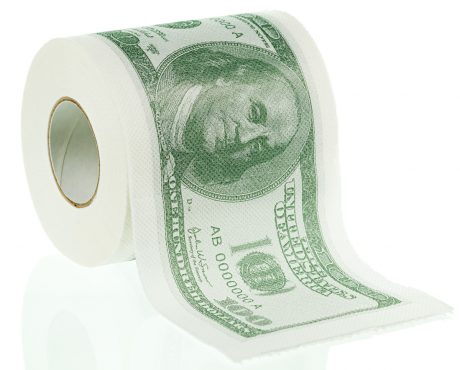The Perfect “Set-and-Forget” Stock?
In a market where high-momentum stocks are making double-digit moves every other day, dividend increase announcements can easily get ignored.
Indeed, thanks to the U.S. Federal Reserve’s decision to keep interest rates at artificially low levels over the last several years, investors have been searching for yield. The result is that the prices of the most well-known dividend stocks have already been bid up, meaning their yields are no longer attractive. A small increase in a company’s quarterly dividend rate does not change that fact.
And yet, some companies are still raising their dividends. For instance, Procter & Gamble Co (NYSE:PG) has increased its payout every year for the past 61 years.
PG stock is one of the well-known dividend giants. Like its peers, Procter & Gamble’s yield is not exactly high, at just 3.12%.
The company’s latest dividend hike came earlier this year. It was a three-percent increase to its quarterly distribution rate, to $0.6896 per share. (Source: “P&G Declares Dividend Increase,” Procter & Gamble Co, April 11, 2017.)
I know what you are thinking: “Why does this three-percent yielder with a three-percent dividend increase deserve the attention of income investors?”
Well, for starters, a company that is capable of delivering decades of consecutive dividend hikes can protect income investors from inflation.
Staying Ahead of Inflation
You may have heard about the 30,000% price increase in one month in the Weimar Republic, Germany, or the 79,600,000,000% monthly inflation rate in Zimbabwe.
These are extreme cases of hyperinflation that likely won’t happen in the U.S. However, note that even a modest inflation rate could lead to significant erosion of people’s purchasing power over time.
tonicpit/Flickr
For example, if prices are rising at a rate of three percent per year, in 10 years, the price level would have increased by 34.4%. In other words, if the standard basket of goods cost $100.00 today, it would cost $134.00 a decade later, with a moderate inflation rate of three percent.
Usually, people’s salaries also increase in an inflationary environment, which can help them keep up with the rise in prices. But, for income investors who rely on dividends to cover their monthly increases, a steady stream of dividends will not be able maintain their current purchasing power, even with just moderate inflation.
What income investors need is an increasing stream of dividends. And that, my dear reader, is why PG stock’s three-percent dividend increase is crucial.
Also Read:
Top 10 Safe Dividend Stocks for Retirees in 2017
4 Best Long-Term Dividend Stocks to Watch in 2017
Due to the 2007–2008 financial crisis, inflation hasn’t really been a big concern for Americans for most of the last 10 years. And yet, according to the Consumer Price Index (CPI) readings from the Bureau of Labor Statistics, the price level in the U.S. still increased by a total of 19% from 2007 to 2016. (Source: “Consumer Price Index,” Bureau of Labor Statistics, last accessed July 24, 2017.)
So what has Procter & Gamble done over this period? Well, from the first quarter of 2007 to the fourth quarter of 2016, the per-share payout of PG stock has been raised from $0.31 to $0.6695. That translates to a total increase of 116%. (Source: “Splits and Dividend History,” Procter & Gamble Co, last accessed July 24, 2017.)
With dividends increasing at a much faster pace than inflation, income investors of PG stock have enjoyed not just bigger payouts in nominal terms, but also higher purchasing power in real terms.
A Stock Worth Owning Forever
What’s even more special is that Procter & Gamble achieved this despite the huge economic downturn. The International Monetary Fund (IMF) said that the Great Recession was the worst global economic downturn since the Great Depression. Businesses were closing down and people were losing their jobs, yet Procter & Gamble kept delivering bigger dividend checks to shareholders.
To be honest, I’m not a bit surprised. Procter & Gamble runs a consumer goods empire with 10 product categories. The company has been around for more than100 years and has established market-leading positions in each of its 10 categories.
Source: “Company Strategy,” Procter & Gamble Co, last accessed July 24, 2017.
A strong brand portfolio is key to the company’s success. When it comes to baby care, personal care, and family products, consumers are willing to pay a premium for brand-name items. Procter & Gamble currently has 65 brands, many of which have become household names. These include “Crest,” “Bounty,” “Head & Shoulders,” and “Gillette,” just to name a few.
What’s more is that the company is running a business that’s largely recession-proof. Think about it: when the economy enters a recession, new car sales may be down, but most people will still be buying toothpaste and paper towels.
The Bottom Line on PG Stock
In today’s stock market, investments often require constant monitoring. Company announcements and macroeconomic conditions are things that almost every investor has to pay attention to. But, with a timeless, recession-proof business and steadily increasing dividends, PG stock could be the perfect “set-and-forget” stock for income investors.
